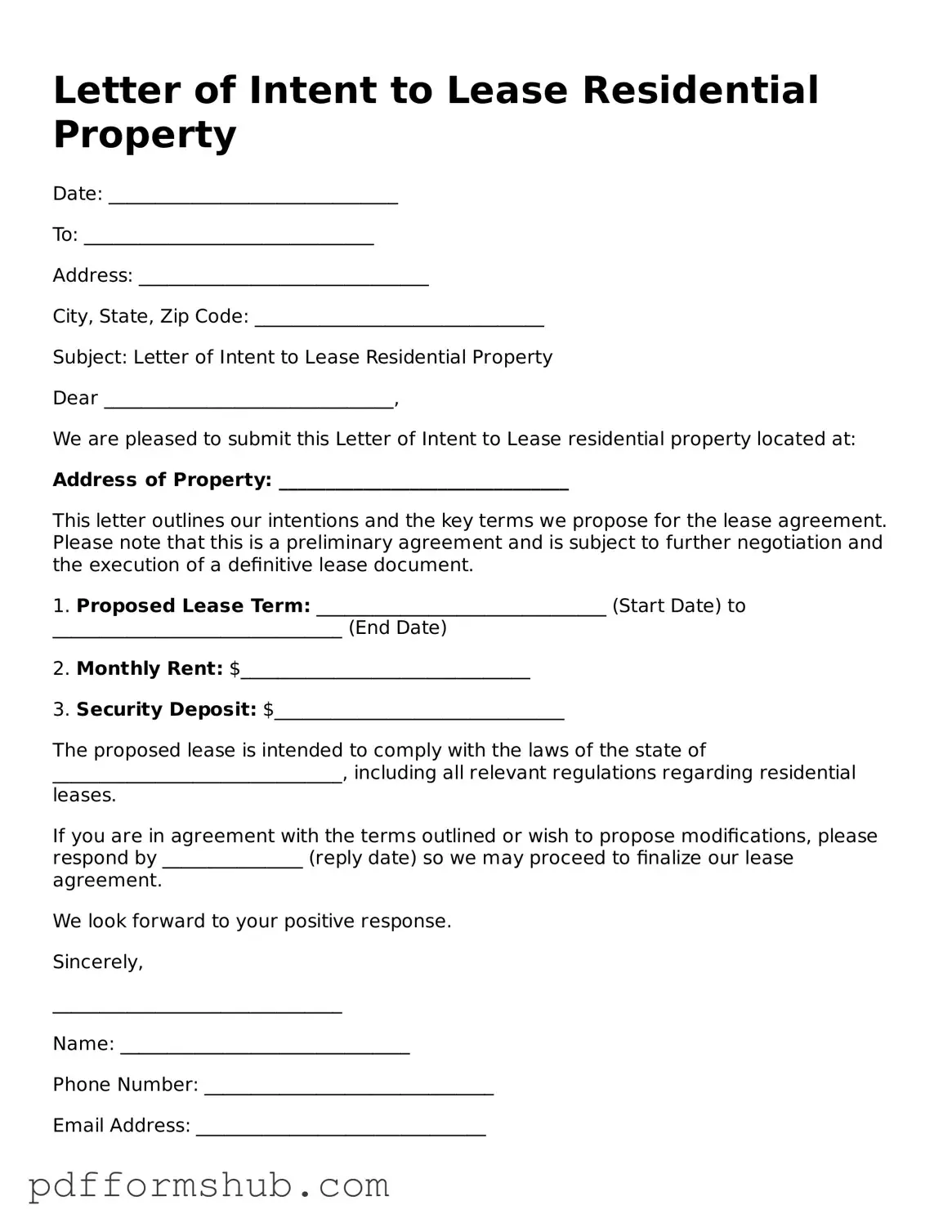Valid Letter of Intent to Lease Residential Property Form
The Letter of Intent to Lease Residential Property form serves as a preliminary agreement between a prospective tenant and landlord, outlining the key terms of a potential lease. This document helps both parties clarify their intentions before entering into a formal lease agreement. To get started on your leasing journey, fill out the form by clicking the button below.
Customize Form
